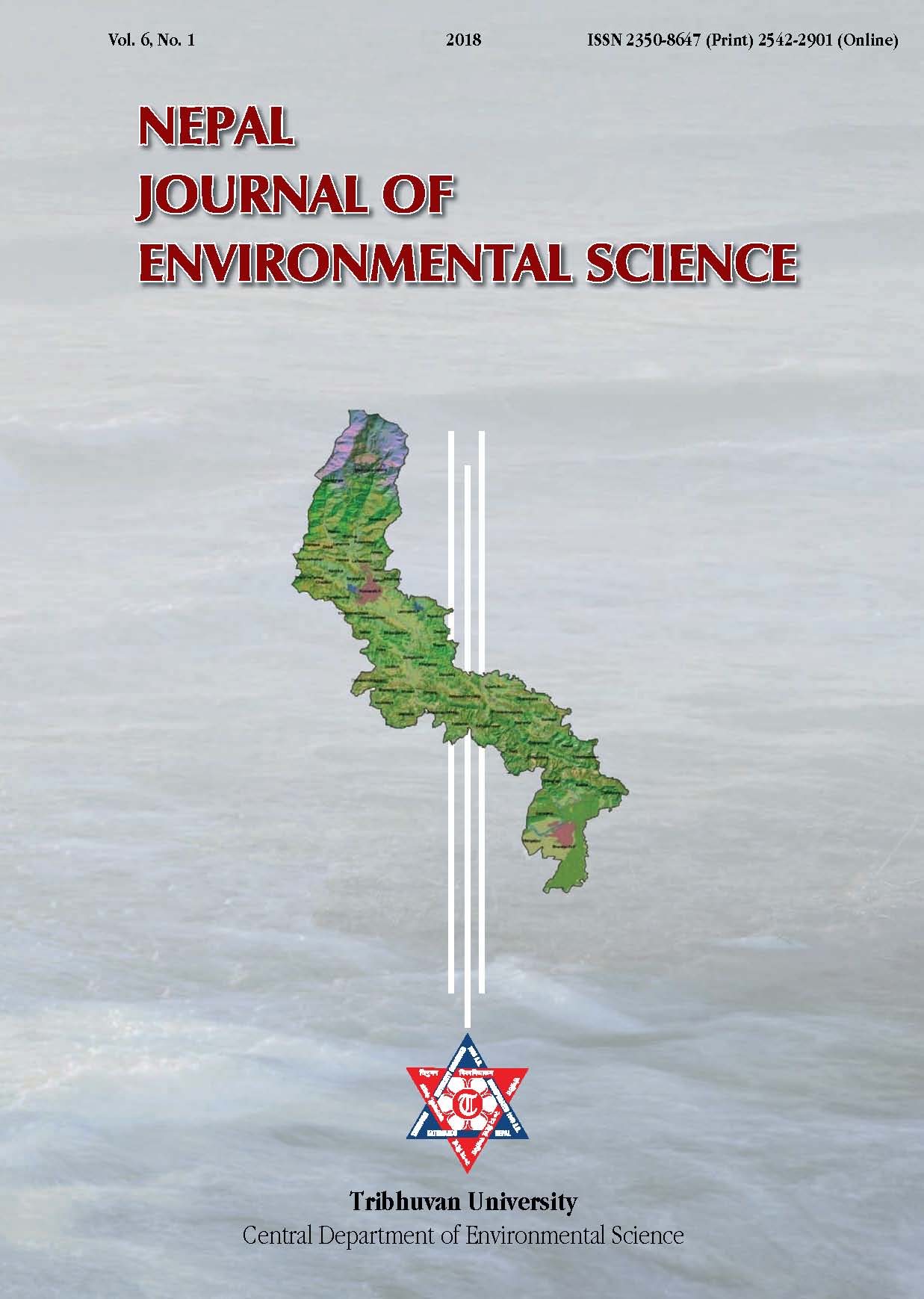Soil fertility status of agricultural land in mid-hill of Gorkha District, Nepal
DOI:
https://doi.org/10.3126/njes.v6i0.30121Keywords:
Lowland, Nepal, Soil nutrient index, Upland agricultureAbstract
Soil fertility management in agricultural land is challenging in hilly areas of Nepal. The study assesses the soil fertility status of Bari (upland) and Khet (lowland) agriculture land in Mid-hill of Gorkha district. Altogether 30 samples were collected from soil surface (0 to 20 cm) by using hand shovel in January, 2017. The soil fertility parameters like pH, organic matter (OM), total nitrogen (TN), available phosphorus (P) and available potassium (K) were analyzed using standard methods in the laboratory of Central Department of Environmental Science, Tribhuvan University. Results revealed that an average pH in upland (6.62) was higher than the lowland (5.94). Similarly, OM (3.95%) and K (36.49 kgha-1) were relatively high in upland. In addition, pH, OM and available K were significantly varied at p<0.05 in upland and lowland soils, however, there is no significant difference in TN and available P. In addition, soil nutrient index showed that status of available K in both types of land is low, while OM and TN are medium soil quality in upland and lowland soil. The use of organic fertilizer and improved farming system can maintain and sustain soil fertility for crop growth and yield. Understanding distribution of soil nutrients in the study area might be useful for planners to make effective soil fertilizer management strategies.
Downloads
Downloads
Published
How to Cite
Issue
Section
License
This license enables reusers to distribute, remix, adapt, and build upon the material in any medium or format for noncommercial purposes only, and only so long as attribution is given to the creator.




